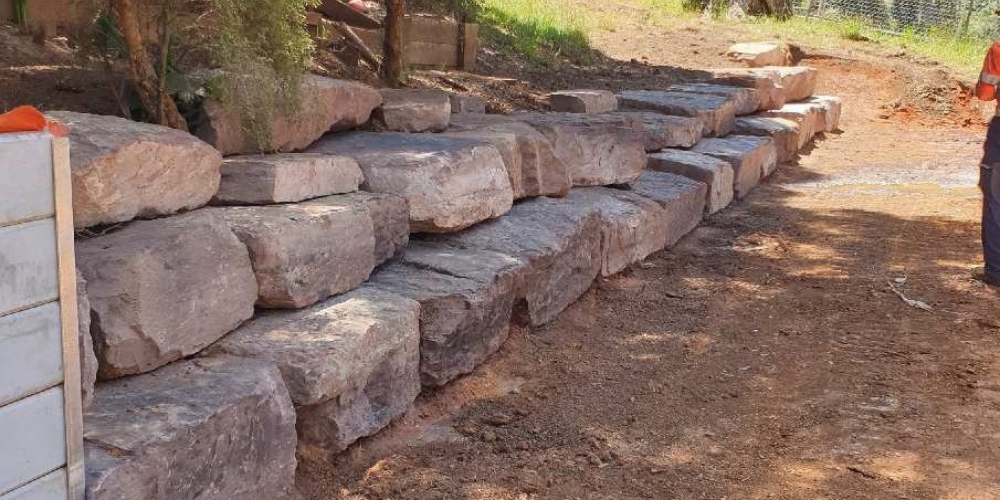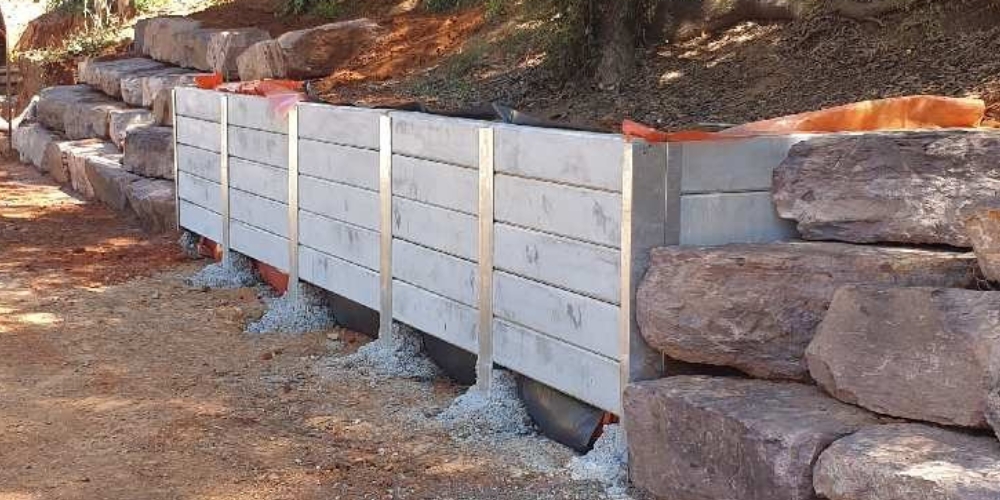A Guide to Block Retaining Walls
Stone, brick, and concrete are some of the materials used to construct retaining wall blocks. One material may be a better fit for your project aims than the next. To choose which is the finest option for your wall, you must first comprehend the distinctions between them. Each retaining wall material has its own set of advantages, drawbacks, and aesthetics. Below, we’ll go over the most prevalent materials. There are three (3) primary types of block for Retaining Wall Systems.

Concrete Masonry Units (CMU)
CMU provides both structural and non-structural partitions that are extremely robust. These can be painted for a cleaner look, but they’re also available in a variety of finishes that serve to increase the visual quality above standard gray. They have a crisp edge and give off a classic, professional appearance. Because the blocks are modular, you may also create a patterned wall design.
Each concrete block is 8″ x 8″ x 16″ and has two identical openings or cells that should be filled with concrete or “grouted solid” when the wall is finished. Standard reinforcing bar is integrated into the cells to unify the wall vertically and extend into the foundation.
Why are concrete retaining walls used and installed?
Retaining walls may be used to create a step in a sloping block, making your yard more accessible and controlling water flow. A retaining wall, when properly designed and constructed by a retaining wall company, may prevent erosion and flooding, keep nearby spaces dry, and even store rainfall for plants.
Its simplicity of construction and good subsurface drainage will guarantee that the appearance of your wall lasts for years.
How much does a concrete retaining wall cost on average?
The cost of a concrete block retaining wall is determined by various factors, including the size of the wall, the number of concrete blocks required, and whether or not a structural engineer is required. The type of concrete you use has an impact on the cost. For reinforced concrete blocks, expect to pay between $450 and $700 per square metre in materials and labor. The costs include the cost of concreters’ labor, which ranges from $60 to $80 per hour depending on where you reside in Australia like Melbourne.
A number of additional elements will impact the cost, including size and scale, height, materials utilized, design, including excavation and drainage needs, and consultancy costs.

Split Face Blocks
Split Face Walls are a common non-engineered wall product. When compared to a CMU or natural stone retaining wall, the split face blocks are low weight, relatively straightforward to build, and cost effective.
This permits the block to be utilised as a decorative and structural element by a landscaping contractor, without the need for extra veneers. The split face is broken down to resemble rough stone. Score lines are etched into the split face of several. This block comes in a variety of colors other than the standard grey concrete, lowering the cost and simplifying the retaining wall building process.
Split Face blocks provide a rough stone-like finish to buildings that are both inexpensive and long-lasting. Split Face blocks are versatile and may be used for both residential and commercial structures. Split Face blocks of various sizes ranging from 9cm to 19cm are available, whether internal or exterior, load bearing or non-load bearing. A lip mechanism is used with the split faced blocks. As a result, the wall’s layers, or courses, are set back approximately 1/4″ to allow for the lip to keep the block in place atop the lower course. For Split Face blocks, expect to pay between $7 and $15 per block.
System Units
The look and building methods of today’s retaining walls have been changed by retaining wall systems. The blocks are more uneven in size to give a surface that is varied and more imitative of actual stone. They are designed to offer a structural unit with a realistic stone-like face. Although these blocks include cells, they are not arranged in the same way as a split face. Each manufacturer will have their own forms, surface textures, and colors, which will be combined in their own building technique. They are precisely fitted together to boost overall strength and remove the need for a block core. These units have made retaining walls much more economical and attractive, especially when used in conjunction with matching pavers.
Conclusion
Every retaining wall contractor will have their own preferences when it comes to the type of wall they need to use on your project. They will present you with the most cost-effective options because they know what brands of blocks are available in your area. Trust their recommendations since they have figured out through time which materials and construction details produce the most aesthetic and practical retaining wall. There are several methods for creating a specific appearance and feel for a wall. Local climate and soils and particular challenges such as earthquakes and local construction standards, have a significant influence.
